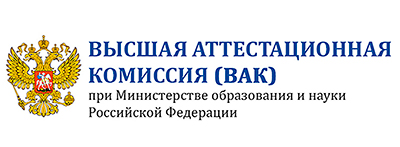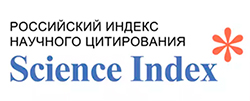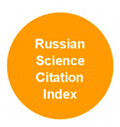Mortality in Moscow and other megacities of the world: similarities and differences
Abstract
The paper is devoted to a comparison of mortality by cause of death in Moscow and other megacities of the world in the period after 1990. The selection of megacities was determined by the availability of detailed mortality data in the period under consideration. The objects of our comparison are data for Berlin, Hong Kong, London, Los Angeles, New York, Singapore, St. Petersburg, and Tokyo. Mortality from major groups of causes of death are considered, including cardiovascular diseases, neoplasms, external causes, diseases of the respiratory and digestive organs, infections and some others. The analysis uses standardized mortality rates by cause of death.
The mortality level in Moscow is significantly lower than in the majority of regions of Russia, but is still substantially higher than in foreign megacities. Due to a big lag at the beginning of the period, the mortality level in Moscow nowadays is higher than in all considered foreign megalopolises in the year 2000. Where Moscow’s mortality level most lags behind others is in mortality from circulatory diseases and external causes. Moscow's successes in reducing mortality in 2000-2014 are very impressive. However, it is difficult to predict how events will unfold in the deteriorating economic situation.
Downloads
References
Aksel E.M. (2009). Statistika zlokachestvennykh novoobrazovaniy zhenskikh polovykh organov [Statistics of malignant tumors of female genitals] // Opukholi zhenskoy reproduktivnoy sistemy [Women reproductive system tumors]. 1-2: 76-80.
Aksel E.M. (2012). Statistika zlokachestvennykh novoobrazovaniy zhenskoy polovoy sfery [Statistics of malignant neoplasms of female genital sphere] // Onkoginekologiya [Gynecologic Oncology]. 1:18-23.
Andreev E.M. (2002). Vozmozhnye prichiny kolebaniy prodolzhitel'nosti zhizni v Rossii v 90-ye gody [Possible reasons of fluctuations in life expectancy in Russia in the 1990s] // Voprosy statistiki [Problems in statistics]. 11: 3-15.
Andreev E.M. (2016). Pravil'no li schitayut umershikh ot sluchaynykh otravleniy alkogolem? [Is number of deaths from accidental alcohol poisoning counted correctly?] // Demoskop Weekly. №673–674. URL: http://demoscope.ru/weekly/2016/0673/tema01.php (accessed: 26.02.2016).
Andreev E.M., E.A. Kvasha, T.L. Kharkova (2006). Osobye tochki na karte smertnosti [The special points on the map of mortality] // Naselenie Rossii 2003–2004. Odinnadtsatyy-dvenadtsatyy ezhegodnyy demograficheskiy doklad [The population of Russia 2003-2004. Eleventh-twelfth annual demographic report] / A.G. Vishnevsky, ed. Moscow: 298–305.
Andreev E.M., E.A. Kvasha, T.L. Kharkova (2013). Smertnost' i prodolzhitel'nost' zhizni [Mortality and life expectancy] // Naselenie Rossii 2010–2011. Vosemnadtsatyy-devyatnadtsatyy ezhegodnyy demograficheskiy doklad [Population of Russia 2010-2011. Eighteenth-nineteenth annual demographic report] / A.G. Vishnevsky, ed. Moscow: Izd. dom Vysshey shkoly ekonomiki: 385–443.
Andreev E.M., E.A. Kvasha, T.L. Kharkova, S.A. Timonin (2015). Smertnost' i prodolzhitel'nost' zhizni [Mortality and life expectancy] // Naselenie Rossii 2013. Dvadtsat' pervyy ezhegodnyy demograficheskiy doklad [Population of Russia of 2013. The twenty-first annual demographic report] / S.V. Zakharov, ed. Moscow: Izd. dom Vysshey shkoly ekonomiki: 182–273.
Andreev E.M., V.M. Shkolnikov, W.A. Pridemore, S.Yu. Nikitina (2015). A method for reclassifying cause of death in cases categorized as “event of undetermined intent” // Population health metrics. 13, Art. 23. DOI:10.1186/s12963-015-0048-y.
Danilova I.A. (2015). Osobennosti postroeniya nepreryvnykh ryadov pokazateley smertnosti po prichinam smerti v Rossii [Features of the construction of a continuous series of mortality by causes of death in Russia] // Voprosy statistiki [Problems in statistics]. 11: 58-68.
Demograficheskaya modernizatsiya Rossii: 1900-2000 [Demographic modernization of Russia: 1900-2000] (2006) / A.G. Vishnevsky, ed. Moscow: Novoe izdatel'stvo.
Fattakhov T.A. (2015). Dorozhno-transportnye proisshestviya i smertnost' v Rossii: 1956-2012 [Road traffic accidents and mortality in Russia: 1956-2012] // Demograficheskoe obozrenie [Demographic review]. 2: 6–36 (accessed: 26.02.2016).
Ivanova A.E., T.P. Sabgaida, V.G. Semenova, V.G. Zaporozhenko, E.V. Zemlianova, S.Iu. Nikitina (2013). Faktory iskazheniya struktury prichin smerti trudosposobnogo naseleniya Rossi [Factors distorting structure of causes of death of working-age population of Russia] // Sotsial'nye aspekty zdorov'ya naseleniyai [Social aspects of population health]. 4(32) URL: http://vestnik.mednet.ru/content/view/491/30/lang,ru/ (accessed: 26.02.2016).
Merabishvili V.M. (2013). Analiticheskaya epidemiologiya raka zheludka [Analytical epidemiology of gastric cancer] // Voprosy onkologii [Problems in oncology]. 59(5): 565.
Merabishvili V.M., N.G. Petrova, A.V. Atrochshenko, M.V. Kharitonov (2014). Analiz zabolevaemosti i smertnosti muzhskogo naseleniya ot raka predstatel'noy zhelezy (populyatsionnoe issledovanie) [Analysis of incidence of and mortality from prostate cancer in male population (population study)] // Kreativnaya onkologiya i khirurgiya. Elektronnyy nauchno-prakticheskiy zhurnal [Creative oncology and surgery]. 2. URL: http://eoncosurg.com/analiz-zabolevaemosti-i-smertnosti-muzhskogo-naseleniya-ot-raka-predstatelnoj-zhelezy-populyatsionnoe-issledovanie (accessed: 26.02.2016).
Oganov R.G., V.V. Konstantinov, T.N. Timofeeva, A.V. Kapustina, A.D. Deev, S.A. Shal'nova, I.E. Koltunov, Iu.A. Balanova, I.N. Lel'chuk (2011). Epidemiologiya arterial'noy gipertonii v Rossii. Rezul'taty federal'nogo monitoringa 2003-2010 gg. [Epidemiology of arterial hypertension in Russia. the federal monitoring results of 2003-2010] // Kardiovaskulyarnaya terapiya i profilaktika [Cardiovascular therapy and prevention]. 1: 9-13.
Pokrovsky V.V. (2004). Sotsial'no znachimye infektsii v XXI veke [Socially important infections in the XXI century] // Narodonaselenie [Population]. 3: 93-96.
Revich B. A., M. Podolnaia, E. Aksel, T. L. Kharkova, E. A. Kvasha (2014). Osobennosti onkologicheskoy zabolevaemosti i smertnosti trudosposobnogo naseleniya Moskvy [Features of cancer incidence and mortality in the working age population of Moscow] // Profilakticheskaya meditsina [Preventive medicine]. 7 (5): 31.
Semenova V.G., O.I. Antonova (2007). Dostovernost' statistiki smertnosti (na primere smertnosti ot travm i otravleniy v Moskve) [The validity of the mortality statistics (on example of mortality from injury and poisoning in Moscow)] // Sotsial'nye aspekty zdorov'ya naseleniya. Elektronnyy nauchnyy zhurnal [Social aspects of population health]. 2(7). URL: http://vestnik.mednet.ru/content/view/28/30/ (accessed: 26.02.2016).
Shaposhnikov D., B. Revich, T. Bellander, G.B. Bedada, M. Bottai, T.L. Kharkova, E.A. Kvasha, E. Lezina, T. Lind, E. Semutnikova, G. Pershagen (2014). mortality related to air pollution with the Moscow heat wave and wildfire of 2010 // Epidemiology. 25 (3): 359-364.
Shkolnikov V., M. McKee., D.A. Leon (2001). Changes in life expectancy in Russia in the mid-1990s // The Lancet. 357(9260): 917–921. doi:10.1016/S0140-6736(00)04212-4.
Shkolnikov V.M., E.M. Andreev, M. McKee, D.A. Leon (2014). Rost prodolzhitel'nosti zhizni v Rossii 2000-kh godov [The growth in life expectancy in Russia at the 2000s] // Demograficheskoe obozrenie [Demographic review]. 1(2): 5–37. URL: https://demreview.hse.ru/data/2014/11/20/1101110530/DemRev_1_2_2014_5-37.pdf (accessed: 26.02.2016).
Sostoyanie onkologicheskoy pomoshchi naseleniyu Rossii v 2014 godu [State oncological assistance to the population of Russia in 2014] (2015) / A.D. Kaprin, V.V. Starinskii, G.V. Petrova, eds. Moscow: MNIOI im. P.A. Gertsena.
UN (2015). World urbanization prospects: The 2014 revision. New York: United Nations.
Vasin S.A. (2015). Smertnost' ot povrezhdeniy s neopredelennymi namereniyami v Rossii i v drugikh stranakh [Deaths from injury with uncertain intentions in Russia and in other countries] // Demograficheskoe obozrenie [Demographic review]. 1:92. URL: http://demreview.hse.ru/data/2015/10/22/1079399391/DemRev_2_1_2015_89-124.pdf (accessed: 26.02.2016).
VOZ (2015). Virus papillomy cheloveka (VPCh) i rak sheyki matki [Human papillomavirus (HPV) and cervical cancer] // Informatsionnyy byulleten' [Bulletin of the World Health Organization].380. URL: http://www.who.int/mediacentre/factsheets/fs380/ru/ (accessed: 26.02.2016).
Waterhouse J., C.S. Muir, P. Correa, J. Powell, eds. (1976). Cancer incidence in five continents. Lyon: IARC. 3: 456.
WHO (2014). Comprehensive cervical cancer control. A guide to essential practice. Second edition.
Wroblewski L.E., R.M. Peek, Jr. Wilson, K.T. Wilson (2010). Helicobacter pylori and gastric cancer: factors. that modulate disease risk // Clinical microbiology reviews. 23 (4): 713–739.




















